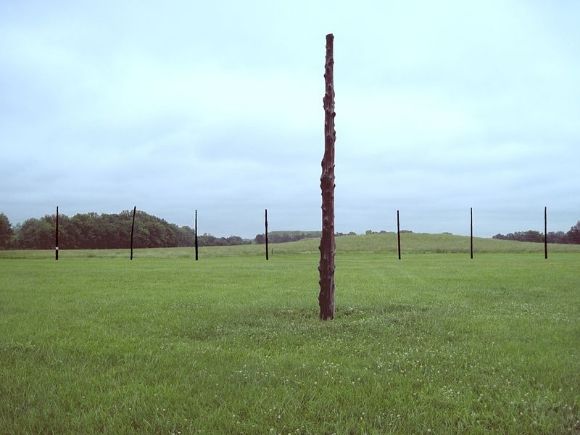All humans have a cognitive map which provides them with a spatial analysis of their world, both natural and human-made. Traditionally, the cognitive maps of American Indians have been carried in the stories. Indian stories, particularly the spiritual stories and the stories of creation, focus on geography, telling what happened where and describing different places and their associations with each other. When one knows the stories, then one has a map of the traditional tribal territory. Traditionally, this meant that a person could go someplace new and know, because of the stories, not only the route, but also the different geographic features which would be encountered on the trip.
The European cultures which first encountered American Indians were accustomed to delineating sacred places with some type of structure or monument which would then be consecrated as sacred. These structures-churches, cemeteries, altars, etc.-were considered to be self-contained, that is, their sacred nature was contained within the space designated as sacred.
American Indians, on the other hand, tended to be animists who viewed the world around them as a living thing. Sacred places were not created by humans. While the people would sometimes designate a sacred place with a structure of some type-a pile of stones, a circle of stones, a mound or earthwork, or a chamber-often places with great sacred power did not have any human-created indications that they were sacred. People know about these places because of the stories and the songs rather than because of the structures which they had constructed.
One example of the interrelationship of sacred space, cognitive maps, and oral tradition can be seen in the Salt Trail Songs of the Nuwuvi (Southern Paiute) which describe both a physical and spiritual landscape. This includes physical features such as oceans and deserts, and spiritual features including life and death. The songs describe ancient village sites, gathering sites for medicinal plants and salt, historic events, trade routes, and sacred areas. The 142-song cycle assists the deceased in their sacred journey.
For American Indians sacred places do not exist in isolation: they are connected to other sacred places and these connections enhance the spiritual power of an area. The connections between sacred places are explained in the stories and in the songs.
It is not just “places” that are spiritually connected, but also the “people” who are associated with the places: the plants, the animals, the rocks. Again, the stories, songs, and ceremonies explain the nature and meaning of these connections.
Beginning in the nineteenth century, archaeologists began their scientific attempts to recreate and understand American Indian past. With regard to spiritual sites, they brought with them a European bias based in classical archaeology: they looked for sacred sites in structures created by humans and they considered these sites as self-contained, that is, not connected with other human-made or natural features in the area. The archaeologists did not know the native stories and often dismissed them as meaningless with regard to their work as archaeologists.
One of the places where archaeologists have become more aware of the larger sacred landscape is in Chaco Canyon, New Mexico. There are eight major sites here-very large apartment-type complexes known as pueblos, each with several hundred rooms-which can be studied independently. However, the discovery of the ancient road system connecting the Chaco Canyon pueblos with other sites outside of the canyon shows that Chaco must be understood as a larger complex. Furthermore, the discovery that the sites in the region often have an astronomical orientation adds an additional dimension to the picture: Chaco represents a very large ritual landscape.
The astronomical orientation found at Chaco Canyon can also be seen in other sites around North America, including Woodhenge at Cahokia, Illinois, the many medicine wheels found on the northern Plains, and the stone chambers found in New England. As with Chaco Canyon, these sites may be studied alone, but they are best understood as a part of a larger spiritual and ritual landscape. Unfortunately, many of the oral traditions (stories and songs) which could provide a better explanation of these landscapes have been lost. Archaeologists, however, must pay attention to the larger landscape in order to understand the role which these sites played in the ancient world. Archaeologists must get past their Eurocentric bias regarding sacred sites and attempt to look at them through Native American and animistic eyes.

Shown above is the reconstructed Woodhenge at Cahokia.
Leave a Reply